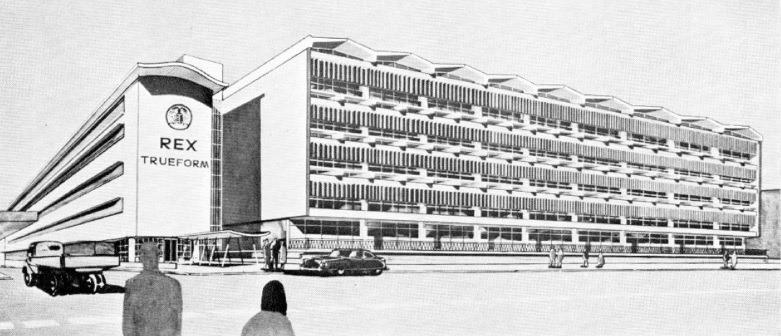
Ilze concludes her book with this sentence: “This approach meant that the archive needed to be simultaneously assembled and “unstitched” in an imaginative way, allowing me to construct an argument about the important connection between architectural space, coloniality, and being human”.
This is exactly what this book does so eloquently. It is a must read for any person who wants a glimpse into the periphery of Cape Town, a world-famous tourist destination where this story does not form part. This is sad as it is a strong spatial, cultural contribution to the shaping of Cape Town.
The book is divided into an introduction, four distinctly differently themed chapters and a conclusion pulling the content together. It is a study of Rex Trueform buildings in Salt River, Cape Town. It talks of modernism, modern industrial space and how it shaped the city. The life of the company spans 80 years. The subtleties of control relating to race and gender in this space are clearly highlighted and described.
The four chapters divide the book as follows:
- Chapter One is a study of the urban character of Salt River prior to the construction of the first factory in 1938. Highlighting the modernist architect Max Policansky’s work at the time.
- Chapter Two offers a reading of the site beginning in 1948. It overlays the social political conditions of this area. Mandela’s release in 1990 brought enfranchisement for black South Africans on the one hand and job insecurity for Rex Trueform workers on the other. This led to the closure of the production line in 2005.
- Chapter Three – “Is she coloured?” This is a fascinating glimpse into the lives of some remarkable families. Max Policansky and political activist Cissie Gool are points of focus. The Spring Queen event is skilfully used to explain the complex nature of the question the writer poses.
- Chapter Four is a pragmatic description of how the factory operated. It is a reminder of 1930s and 1940s, a period where factories were prime sites for sociological studies of the conditions surrounding poverty and race. Furthermore, studies of poverty and industrialisation are linked here to studies of race and gender.
The book unstitches the connection between architectural space, coloniality and being human, a very comprehensive piece of writing.
Via The Cape Institute for Architecture
Disclaimer: Any views expressed by individuals and organisations are their own and do not in any way represent the views of The Heritage Portal.
